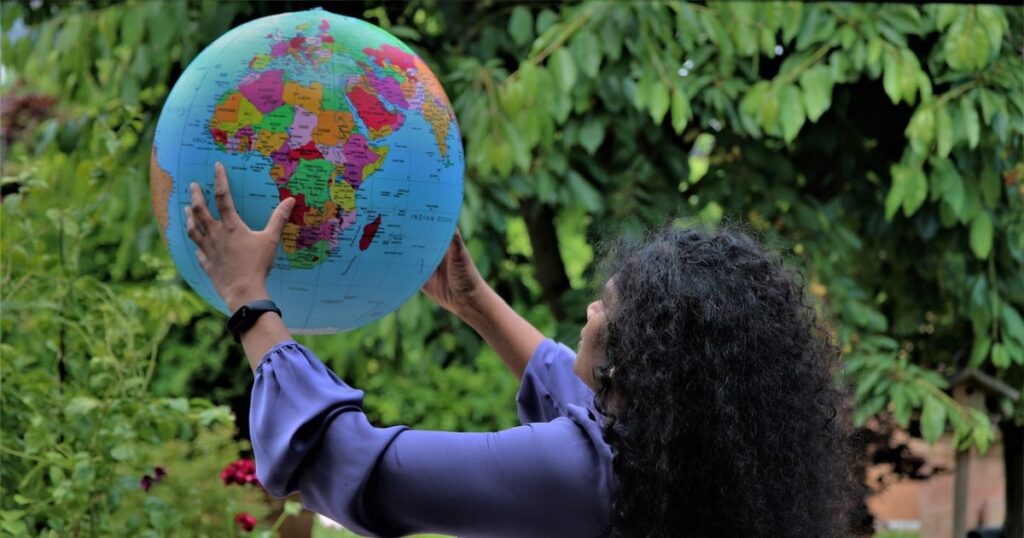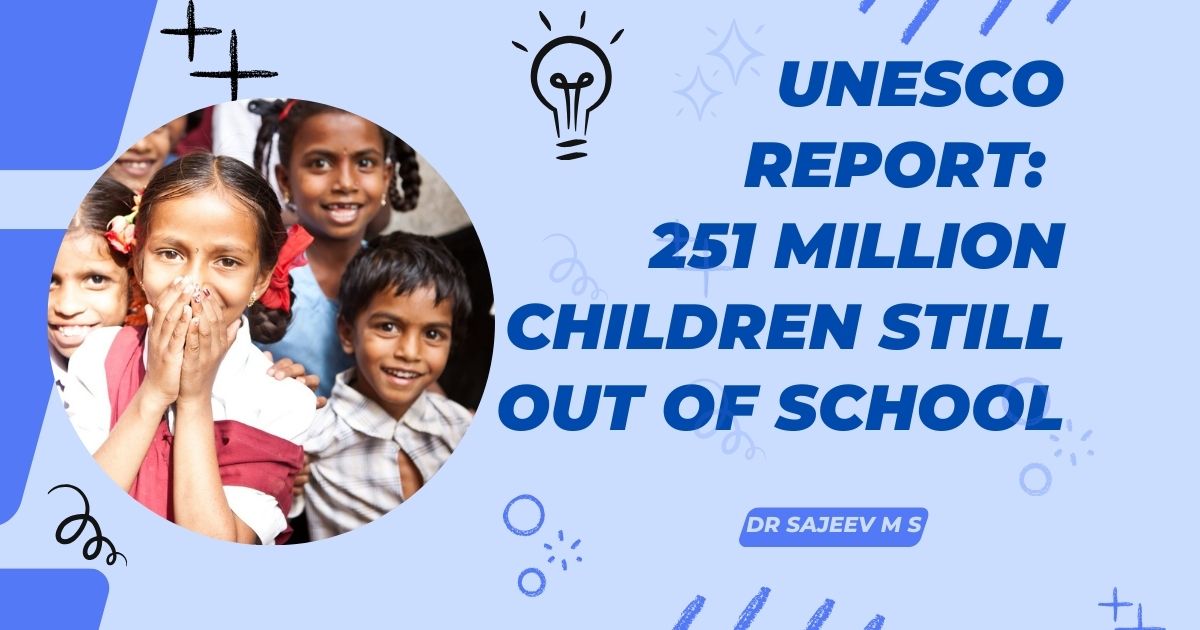Global climate change remains one of the more significant problems of the twenty-first century contributing to transformations within ecosystems, economy, and societies of the globe. Technological solutions, sustainable policy changes for climate, and adaptation, as well as mitigation, are important, yet education comes out stronger in establishing the power to act towards climate change and for the development of resilience. UNESCO’s report, Education and Climate Change: Learning to Act for People and Planet discusses climate change on education and emphasizes how education systems can lead to climate change interventions.
Climate Change and Education are Interlinked
Education and climate change are interconnected since climate change is a critical dimension in the current society. Climate change affects the schooling process, education systems, and outcomes and puts huge pressure on school infrastructure and students as well as injuries and loss of students, parents and school staff. At the same time, education prepares a person and prepares him for the necessary actions about these disruptions, as well as the desire to contribute to the formation of a sustainable environment.
According to the Report of UNESCO, climate change is not just an issue of acquisition of knowledge, which education addresses. It comprises socio-emotional learning, behavior modification, and child action–based instruction.
Climate Change Disrupts Education Systems and Outcomes
This report states that climate-related stressors, such as heat, wildfires, storms, floods, droughts, diseases and rising sea levels, affect education outcomes(Prentice et al,2024)Despite reductions in these loss estimates in recent years, rising physical loss through cyclones, floods, droughts, and sea levels poses a daunting threat, especially to Low- Middle-Income Countries. For example, Cyclone Idai in Mozambique destroyed 305000 children out of school after closing down 3500 classrooms in Mozambique in 2019. Likewise, extreme weather events in some of the Pacific countries have affected as many as 90% of school structures in the affected areas.
A 2021 assessment of over 6000 school buildings in Samoa, Tonga and Vanuatu found that 50-90% of buildings may not withstand a strong cyclone or earthquake (World Bank, 2022)
The indirect impacts are equally significant. Due to heat waves, students are not able to learn as much as they ought to be learning. Every degree of school-year temperature drop lowers test scores by 1 %, associated with a 1°C increase in temperature – with underprivileged students the hardest consequences due to poor infrastructure conditions.
The Power of Education in Climate Action

1. Protection through Knowledge and Skills
Various challenges in this context include the lack of human capital prepared for the low-carbon transition and the insufficient number of people with green innovations as well as education. For instance, studies or research conducted in both Vietnam and Denmark led by CEOs with increased formal education have minimized effects and sustainable approaches to energy utilization.
2. Adaptation and Resilience Building
Understanding disaster management and agriculture changes to its productions to fit the impacts of climate change, education creates an ability how to handle change. Across Pakistan literate farmers, have adjusted changed behaviors by diversification and insurance to mitigate the unpredictability of climate.
3. Demographic Impact
Education especially that of women carries immense impacts associated with population control which in turn relates to climate change. Bangladesh’s extended secondary schooling through programs like secondary school stipends has slowed down early marriage and childbearing towards sustainable development goals.
Difficulties in teaching Climate Change
Nevertheless, climate change education remains a less popular object of national and global policies. Only 7 % of the climate references used in submissions to the UN, incorporate Social-Emotional Learning, a driver of behavior. In addition, while implementing their curriculum, formal curricula erase experience-based and action-research learning approaches.
Hearing this from UNESCO, there is growing concern regarding what the organization refers to as the gap between what is known and what is done. Education makes people aware of their ill effects, but that awareness does not lead to responsible behavior change, indicating that there is a long way to go for education reform.
Transforming Climate Change on Education

- Curriculum Reform: Climate should be added to all curriculum throughout the education systems starting from the basic education level. Like Finland, there has been integration of a cross-disciplinary curriculum that includes field-based observations and interviews with stakeholders and informed solutions.
- Experiential Learning: Real-world projects in a class have a way of making a student relate more closely to the issues that are being taught in class. The programs developed in Austria and Italy have demonstrated how collaboration with experts makes students think critically and adapt.
- Social-Emotional Learning: Climate anxiety and student’s emotionality should be managed together with empowering students to take action and remain committed in the long term. The meaning of hope and agency has integration into Swedish schools with many of the teaching methods providing students with an outlook and a blueprint on how to solve them.
Innovative Practices in Climate Education
Global Examples
- Cambodia: Resilience projects such as tree planting and climate-smart agriculture are part of an Earth science curriculum.
- France: Resources from Réseau Canopé provide educators with tools to train students about climate change.
Local Initiatives
The efforts in Nigerian schools’ community-based environmental education initiatives demonstrate the power of localized learning. They all promote students’ cultural and regional contexts to inspire actionable change.
The Need for Lifelong Policies and Investments
The attainment of climate resilience in education requires policy consistency, proper resource allocation, adequate funding and engagement of all stakeholders. Examples include:
- Mozambique’s Resilience Standards: Mandated construction standards aim to make buildings very resistant to the climate conditions that our law prescribes.
- Indonesia’s Safety Framework: This framework has been implemented in over 35,000 schools and has increased their disaster preparedness.
Why Informal Education is Important
Informal education systems including media-specific campaigns and workshops which are not within the settings contribute to climate education. Since work involves communicating with a diverse audience, it is more effective to sensitize the information that is being passed around.
Recommendations for a Greener Future

To harness the full potential of education in combating climate change, UNESCO outlines several recommendations:
- Green Curriculum Indicators: Monitor and evaluate national curricula for environmental content.
- Enhanced Teacher Training: Prepare educators as interdisciplinary and activity-based instruction facilitators.
- Community Engagement: Correlate school-family-community ties for scaled-up outcomes.
Conclusion
Education about Climate change is an important element affecting attitudes and behaviors to create a sustainable future. But to unlock its promise, professional development needs to move from the concept of information sharing to graduates as transformative learning agents that can transform proactive behaviors and build resilience.
In conclusion, the importance of the development of sound education policies, effective use of learning/teaching strategies, and community-based approaches in managing the challenges of climate change cannot be overemphasized. Education should play a central role in climate initiatives so that all people and societies become ready and willing to act for the plan.
You may like to read:-Benefits of Play in Early Childhood Education for Growth and Learning
How to Promote Equity in the Classroom for Student Success
Effective Classroom Management Strategies for New Teachers
- How to Dominate Your Online Business With 5 Proven Digital Marketing Strategies
- How to Cultivate Critical Thinking and Problem-Solving Skills in Classroom
- Top Proven Mental Health Strategies for Schools in 2025-26
- Time Management for Teachers: How to Plan, Prioritize, and Perform Better
- How Parental Involvement in Education Shapes a Child’s Growth and Success



Thank you for your sharing. I am worried that I lack creative ideas. It is your article that makes me full of hope. Thank you. But, I have a question, can you help me?
The VectorJet team is dedicated to coordinating private jet charters, team flights, and freight charters.
They offer customized solutions for business jet journeys, on-demand flights, helicopter flights, and freight delivery, including urgent and relief missions.
The company offers adaptive travel options with personalized aircraft recommendations, round-the-clock management, and help with unique requests, such as animal-friendly travel or hard-to-reach destination access.
Additional services feature jet leasing, brokerage, and business aviation management.
VectorJet serves as an intermediary between clients and third-party operators, ensuring premium quality, seamlessness, and smooth execution.
Their objective is to bring business jet travel accessible, secure, and fully customized for every client.
hire private jet